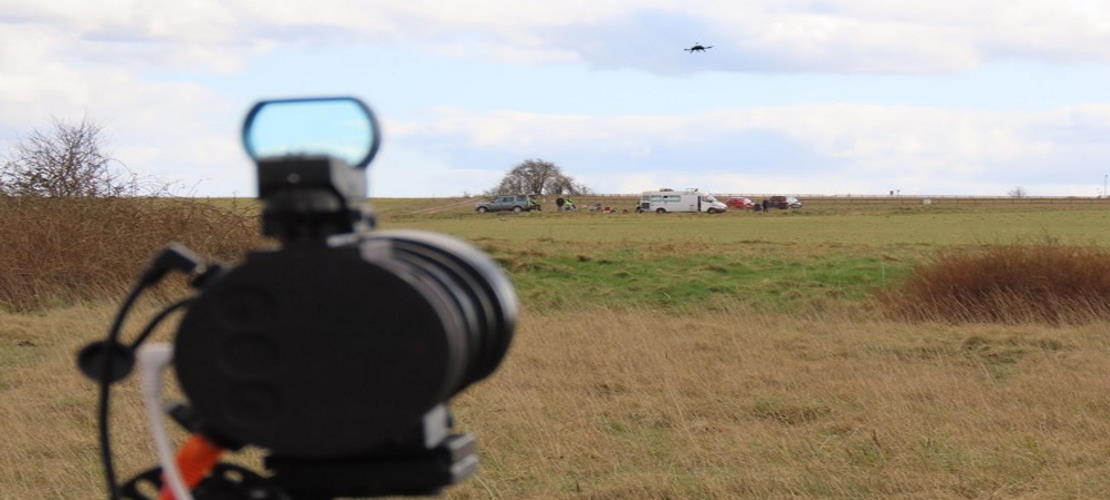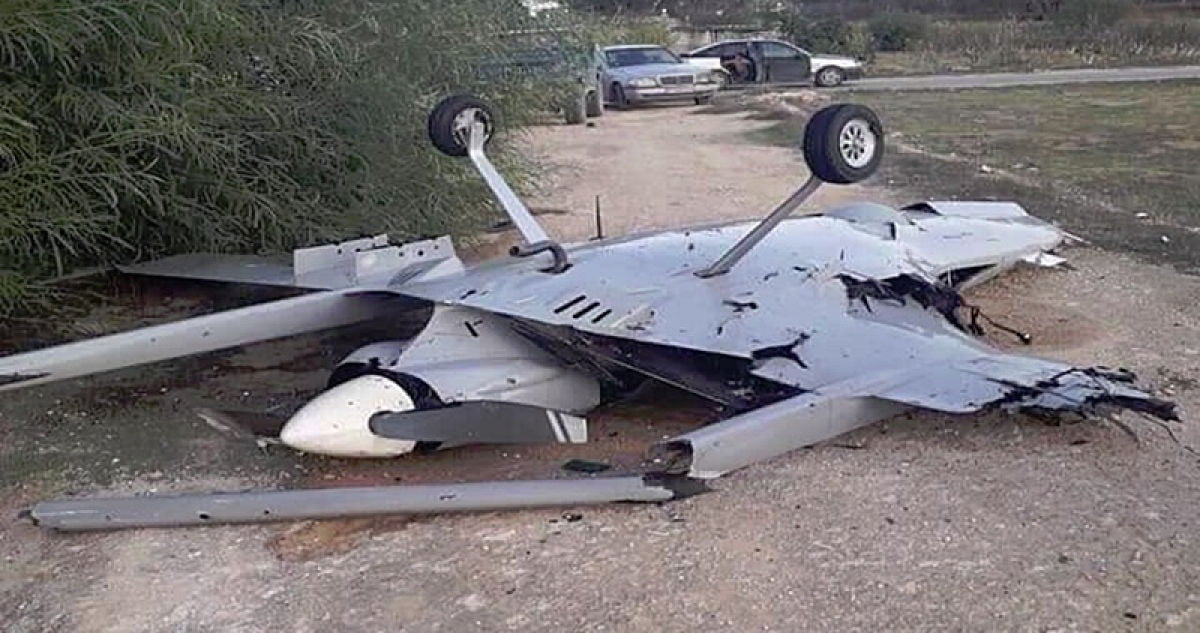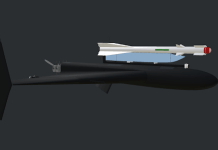A British company has introduced a new laser-controlled drone that can eliminate the radio connection, which is often jammable and vulnerable to interception, detection, and interference.
Meant to bypass counter-drone systems, the technology still seems to be in a nascent stage yet promises to open up a whole new direction in the rapidly evolving Unmanned Aerial Vehicle (UAV) and UAV-detection technology.
Called the Free Space Optical Communications (FSOC) by the UK-based technology and defense aerospace company QinetiQ, the demonstration saw a ground-based operator control a UAV, sending control commands and receiving sensor and platform information through the Free Space Optical Communications (FSOC) – a bi-directional link in its ground control and communication system.

The ongoing war in Ukraine bared the vulnerability of UAVs, particularly the Turkish TB-2 Bayraktar used by Ukraine, that were shot down in large numbers, prompting a rethink on their continued employment by the Ukrainian Armed Forces (UAF).
The Russian army, too, had long led efforts in counter-drone and Electronic Warfare (EW) since its 2015 intervention in Syria on behalf of the government of President Basher al-Assad.
Russia is also constructing an advanced laser system called Kalina at a Russian space facility designed to blind enemy satellites. The Krona space facility, located close to Zelenchukskaya in far-southwestern Russia, is where the construction of this system is taking place. This space facility is already known for housing the massive RATAN-600 radio telescope.
“FSOC provides very high bandwidth, very low probability of detection communications, low logistical footprint and the potential to negate the considerable investment that adversaries may have made in denying the RF spectrum,” said a statement from the company.

All UAVs are controlled by Radio Frequency (RF) communication, which can be jammed and interfered with RF jammers. “This was a successful demonstration of an integrated FSOC system as a means of operation in a contested RF environment where there is a need for secure, covert operations,” the company’s statement added.
The project has been sanctioned by the Ministry of Defence (MoD) and is a part of the Defence Science and Technology Laboratory’s (DSTL) Air Command and Control, Intelligence, Surveillance and Reconnaissance (C2ISR) and Interoperability Project.
The project aims at enhancing both current and future UAVs with digital interoperability and resilience of the communication systems controlling air platforms and UAVs with the FSOC. The results of the outputs of the project are expected to impact the activities of the UK’s Air, Land, Maritime and Joint Commands.
Dave Dixon, QinetiQ Technical Lead for the project, remarked: “This innovative use of FSOC builds on the earlier Crewed-Uncrewed Teaming demonstrations that provided the UK and European firsts in the live airborne control of UAS.
It also showcases the talent and capability available in the UK and provides further evidence that teams comprising both humans and machines are an essential part of how militaries operate in the future”.
Rob Scott, QinetiQ Programme Manager, added: “To make it possible, we had to take a mission-led innovation approach and work very closely with DSTL and partners. We’d also like to thank AVoptics for their support and rapid integration of their WOLF FSOC system into the demonstration”.
The demonstration was a live-virtual event, using interoperable message standards to task a number of virtual platforms and the live UAS, using QinetiQ ACCSIOM swarm technology. The extensive ground and air space was provided by the Army within Salisbury Plain Training Area (SPTA).
Downsides of Laser Communications
It is unclear if the system can be operated by a ground control station that’s situated at a distance, but the photo released by the company suggests it requires a ‘line of sight’ to remain linked to the drone.
This limits the number of roles since the controller can’t be too remote. The control station, however, does appear to be compact.
Moreover, it is also not known if laser communication can work through smoke, polluted air and other air quality issues. Being much more precise, denser and directed than radio communication – or lower wavelengths in physics and engineering terms – they cannot go through or around objects. Thus an obstacle in the line of sight is likely to block a large portion of the laser.
This is not to mention that even if these problems are overcome, the laser-controlled drones can still be shot down by nets, missiles, or anti-aircraft rounds. But nevertheless, the technology does provide an avenue to nullify the massive advances in EW advances by several countries and increase the overall survivability of drones.
- The author can be reached at satamp@gmail.com
- Follow EurAsian Times on Google News




